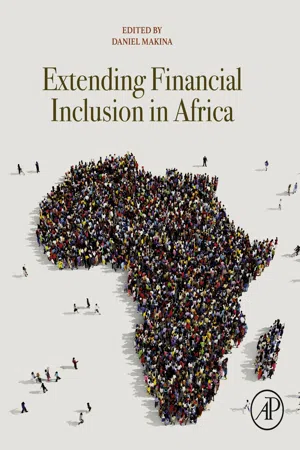History
Evolution of Banking
The evolution of banking refers to the historical development and changes in the banking industry, from its early origins to the modern system. This evolution encompasses the transition from simple money-lending activities to the complex financial services offered by banks today, including deposits, loans, and investment services. Over time, technological advancements and regulatory changes have significantly influenced the evolution of banking.
Written by Perlego with AI-assistance
Related key terms
2 Key excerpts on "Evolution of Banking"
- eBook - ePub
Salvage ethnography in the financial sector
The path to economic crisis in Scotland
- Jonathan Hearn(Author)
- 2017(Publication Date)
- Manchester University Press(Publisher)
I view BoS/HBOS through an ecological and evolutionary model. By that I mean I make sense of the changes to the Bank by seeing these as successive adaptations, always approximate and imperfect, to a changing institutional environment. That environment can include any number of factors, but most crucial among these are the complex interactions of state and economy. Banks are brought into existence, and get their livelihoods, by serving the needs of these two constituencies. And as in most evolutionary theory, competition is a core dynamic, significantly affecting pressures towards change. To varying degrees according to prevailing conditions, banks compete with one another, are affected by political and economic competition between other organisations, and internalise competition, making it part of their own operations. Let me elaborate briefly on these three areas of institutional evolution, state–economy relations and competition.The term ‘evolution’ is liable to set off alarm bells (Degler 1991 ). It easily triggers two misunderstandings: first, that one is trying to reduce the social to the biological; and second, that one conceives of some predetermined path of development that things will follow. Neither of these is the case here. For me, the emphasis is on how change in an entity (in this case an organisation, a bank) is driven by processes of adaptation to an environment. This analytic model does not, of itself, imply any directional change, simply an ongoing context and core dynamic of change. Whether one regards this conception as relying on an analogy with biological evolution, or whether one regards evolution in both the biological and social domains as reflecting some more general logic of change, does not concern me here (see Hodgson and Knudsen 2010 : 30–46). Various efforts to ground theories of social change in an evolutionary model have tried to analogically parallel the various specific processes from genetic evolution (e.g. Nolan and Lenski 2004 ), especially in trying to identify a concept such as a ‘meme’ (a cultural or informational unit that is ‘inherited’) to correspond to the gene (e.g. Blute 2010 ; Runciman 2009 ). I am not interested in such tight analogies, and find them unconvincing. I am in fact more influenced by an older anthropological approach that sought to understand basic tendencies and variations in broad types of social organisation in terms of the ecological conditions in which they develop and operate, and the effects of increasing scales of operation (Fried 1967 ; Service 1975 ; Steward 1972 - eBook - ePub
- Daniel Makina, Daniel Makina(Authors)
- 2019(Publication Date)
- Academic Press(Publisher)
Section 2 Evolution Of Financial Markets And InstitutionsOutline2. How Did Banks Evolve in Africa? 3. Financial Development in Africa: Is It Demand-Following or Supply-Leading? 4. The Role of Financial Markets and Institutions in Private Sector Development in AfricaPassage contains an image
2How Did Banks Evolve in Africa?
Daniel Makina Department of Finance, Risk Management and Banking, University of South Africa, Pretoria, South AfricaAbstract
The chapter makes attempts to trace the historical development of financial institutions, and banks in particular. The focus is on how banking systems emerged in Africa. Pre- and post-colonial institutions are explored. Crucially, post-colonial institutions are examined in the context of how they are extending financial inclusion to the bottom pyramid of the economies. Furthermore, differences arising from colonial origins are analysed.Keywords
Africa; Banking; Colonization; Financial inclusion; Money; ROSCAS- 1. Introduction
- 2. Financial Institutions in Pre-Colonial Africa
- 3. Colonial Demarcation of Africa and Financial Institutions
- 3.1 Colonial Demarcation
- 3.2 Colonial Banks
- 3.2.1 British Colonial Banks
- 3.2.2 Continental Colonial Banks
- 4. Financial Institutions in Post-Colonial Africa
- 5. Commercial Bank Access Four Decades Post-Colonial
- 6. Looking Ahead
- References
- Further Reading
1. Introduction
The contemporary view is that a competitive financial system that intermediates funds from those who save to those who consume and/or invest is the lifeblood of a healthy and vibrant economy. A financial system comprises financial intermediaries (banks, insurance companies and similar institutions) and financial markets (stock and bond markets) that play this intermediation role. When one looks at the proliferation of financial intermediaries and financial markets today, one is tempted to think they have existed from time immemorial. Just like human beings, financial institutions have evolved over time to become what they are today.
Learn about this page
Index pages curate the most relevant extracts from our library of academic textbooks. They’ve been created using an in-house natural language model (NLM), each adding context and meaning to key research topics.

